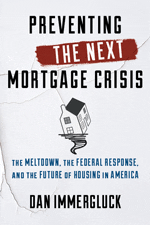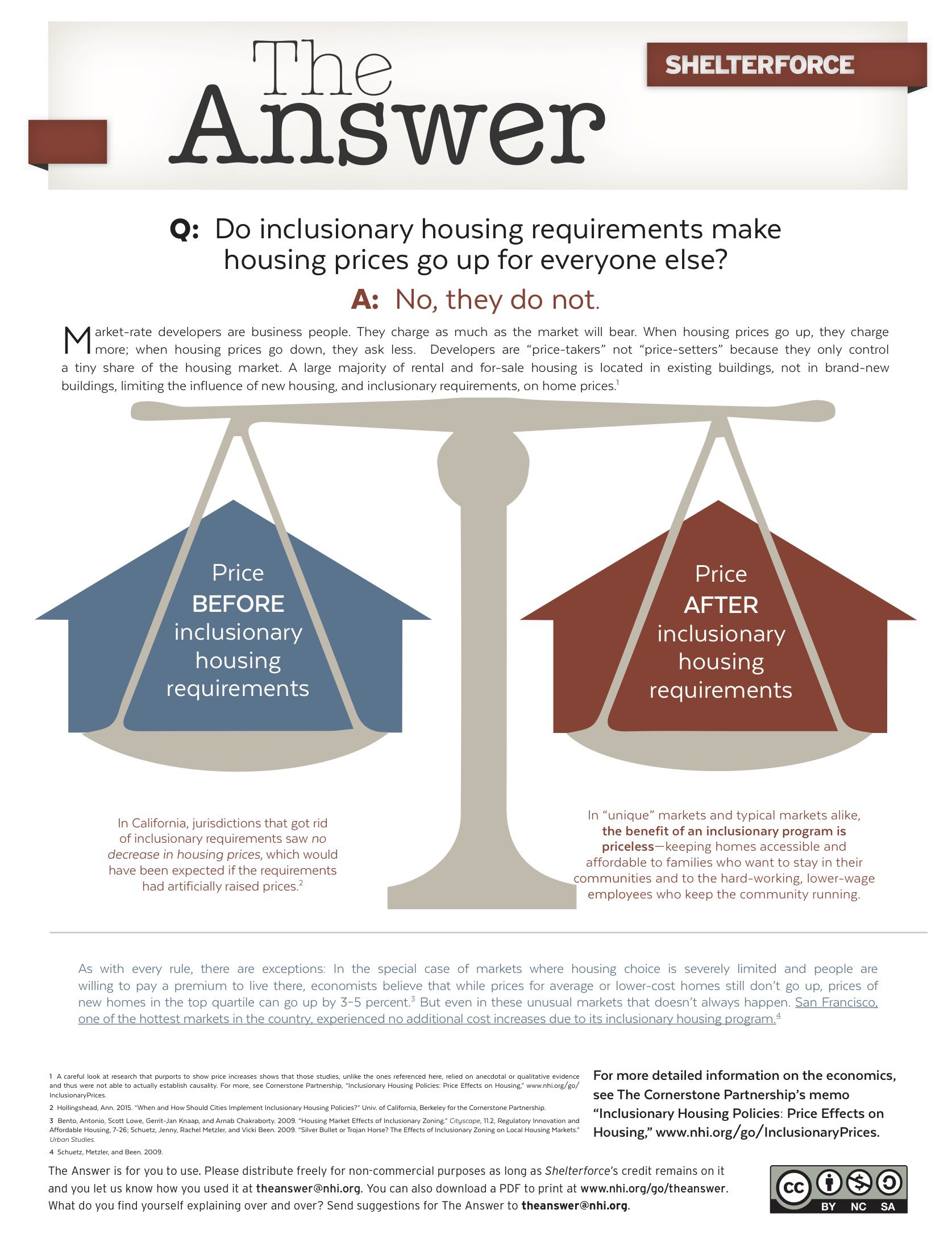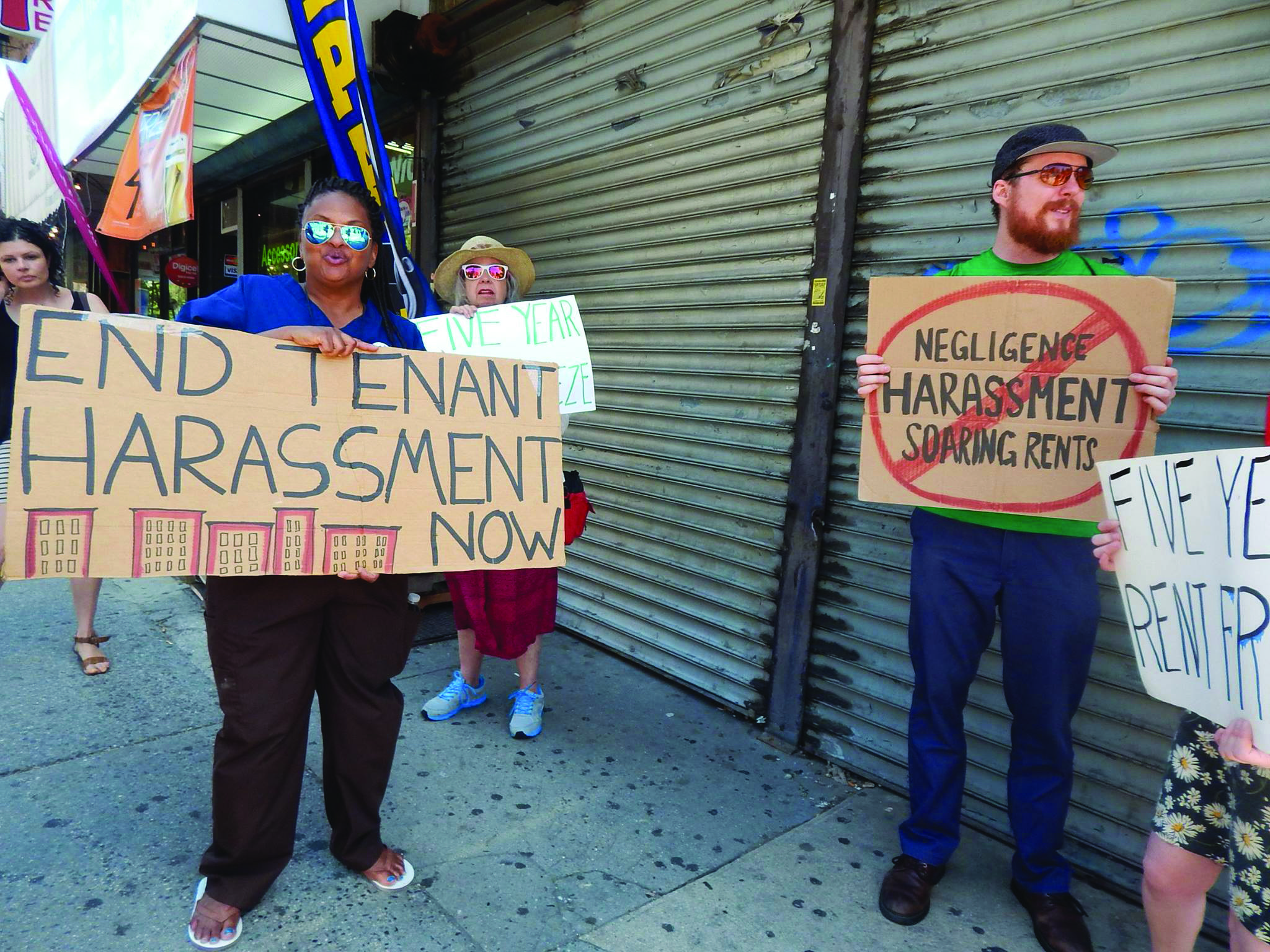
Housing finance shapes our communities, our neighborhoods, and our educational and economic opportunities. Like it or not, the primacy of local government in the U.S. in providing public services means that local housing markets—driven in part by housing finance—drive our local political governance and the composition of our local communities. Yet too often the Beltway debates over housing finance seem to focus on macroeconomic issues and the concerns of financial institutions and ignore the critical ramifications that the structure and regulation of housing finance has for our neighborhoods and cities.
The mortgage crisis was fundamentally the result of a long-term shift of housing finance toward a system dominated by risk-loving global capital markets, which were drawn to U.S. housing markets by a three-decade pattern of deregulation and privatization. Prior to the late 1990s, U.S. mortgage markets had relied on closely supervised institutions, federal guarantees and insurance, and relatively risk-averse circuits of capital. Private-label securitization allowed for a less supervised connection between yield-hungry global capital and individual homeowners, with little governmental oversight. Credit rating agencies seized on these booming markets and provided as many AAA ratings as they could.
And yet, in the face of overwhelming evidence to the contrary, some continue to lay principal blame for the crisis at the foot of government housing and community reinvestment policy. Unfortunately, evidence-based arguments are often of limited influence in high-stakes policy debates.
A silver lining to the crisis is that it resulted—at least in the near term—in a fundamentally stronger consumer protection regime in housing finance, including the creation of the Consumer Financial Protection Bureau and regulations requiring lenders to confirm that a borrower has the ability to repay a mortgage. However, foes of the Dodd-Frank Act continue to try to repeal parts of the law and reduce the power of the CFPB.
New Architecture
Relying solely on reversible regulatory measures to maintain the integrity and fairness of the mortgage market is short-sighted and politically naïve. Therefore, along with trying to preserve sound regulation, it is critical that the fundamental architecture of mortgage markets foster fair and responsible lending. More than eight years since the crisis began, the long-term structure of mortgage markets remains uncertain. This architecture remains the critical issue that will determine access to housing opportunities going forward.
Unfortunately, most of the Beltway proposals for reforming housing finance since 2008 have called for various levels of privatization—usually based on a system of private-label securitization—with a fundamental goal of increasing the role of private capital in the mortgage market. Elevating such an objective to the level of a primary goal makes little sense. Housing finance reform should be fundamentally aimed at generating sound, affordable, and fair mortgage markets. Placing private capital in the driver’s seat of housing finance is unlikely to achieve such a goal.
I propose a “public option” for housing finance that utilizes private capital, but channeled through a publicly owned, unifying infrastructure that purchases and securitizes all mortgages eligible for federal backing. One of the key dangers of reducing the federal role in housing finance is the difficulty of then pooling and cross-subsidizing borrowers, which allows a broad class of mortgage borrowers to obtain credit on similar terms and prices.
The privatization—either partial or full—of mortgage markets, which many Beltway commentators support, promises to result in a housing market in which affordable and fair homeownership finance is available only to better-off families. This would have serious impacts on the nature of metropolitan America that go beyond restricted opportunities for building financial assets. It would restrict housing options—including access to more desirable neighborhoods and good school districts—and reduce homeownership rates in many moderate-income and even middle-income neighborhoods. In the many communities where tenant protections are scarce, more families would be vulnerable to sudden increases in rent, irresponsible landlords, and easy eviction.
As income and wealth inequality persist in the United States, some will argue that homeownership should only be available to more affluent households, so that lower- and middle-income households might remain more mobile to reflect the more contingent and tenuous nature of such families. There is certainly a dire need for more affordable, quality rental housing for low- and moderate-income families. However, many families—especially those with children—will prefer, and may benefit from, affordable homeownership options, and these should be preserved. The appropriate policy goal is one that should appeal to conservatives and liberals alike: policy should be aimed at preserving both affordable and stable rental and ownership options for all families for whom such options make sense. For many moderate- and lower-middle-income families, ownership can remain a good option if housing finance markets are accessible, affordable, and risk-limiting.
A major privatization of mortgage markets will lead to mortgage markets where higher-cost lenders specialize in lending to higher-risk borrowers, which will include many less affluent households and families of color. So-called risk-based pricing will result in higher-cost and higher-risk lending to be concentrated in precisely the sorts of groups and communities that are least able to absorb economic shocks. Conservative estimates prepared for the Bipartisan Policy
Center on the effect of even partial privatization suggest that a borrower with a credit score of below 700 and a downpayment of under 10 percent is likely to see an interest rate well over two percentage points higher than a borrower with a 20 percent downpayment and a credit score over 750. Risk-based premiums for lower credit-score borrowers would be even greater, and full privatization would result in even larger rate differences.
Beyond Housing Finance
In addition to injecting a public option in the debate over the future of housing, there are other things we can do. One is to maintain a strong and robust Federal Housing Administration with the ability to support a substantial portion of the overall mortgage market, especially during times of economic and housing market distress, as the agency did during the subprime crisis.
Another is to reinvigorate community reinvestment and fair lending policy. The persistent myths over the role of such policies in the crisis have made for a hostile environment for fair lending and community reinvestment laws. The enforcement of CRA and fair lending laws in recent years have sometimes been marginalized to the point where the laws seem to be afterthoughts. The vigor that was brought to these laws in the late 1980s and early 1990s needs to be renewed. The laws also need to be modernized to correspond to a world in which mortgage companies have become dominant forces in the market. CRA should cover all originators of mortgages. Home Mortgage Disclosure Act data should include a wide variety of credit-related data, as called for in Dodd-Frank, and the expanded data should be made publicly available.
One area where Dodd-Frank failed, despite the efforts of some legislators, was in increasing the regulation of the credit rating agencies. The SEC must be much less intimidated by the ratings firms. Moreover, specific legislation to revamp the assignment of credit rating agencies to move away from the traditional issuer-pays model remains urgently needed.
Many Shelterforce readers recognize the importance of a strong federal role in the financing affordable rental housing. The experience of the financial crisis demonstrated the importance of the FHA and the GSEs in financing rental housing. Without these sources, loans for rental housing would have dried up. The need for affordable multifamily rental housing will only continue to grow, especially as mortgage markets remain relatively tight and wages remain generally stagnant.
We can revert back to the boom-bust housing markets that left many families and neighborhoods devastated by foreclosures, rapid declines in housing prices, job losses, and other related problems. Alternatively, we can move toward sound and fair mortgage and housing markets based on principles of prudential regulation, a concern for fairness and equity, and the importance of housing to neighborhood and family stability and opportunity. Neighborhoods and cities have been scarred by the crisis. We have made some real strides, especially in terms of improving consumer protection regulation. However, there is much work to be done on shaping the future of housing finance and housing markets.
The analysis and recommendations in this article are explored in more detail in my new book Preventing the Next Mortgage Crisis: The Meltdown, the Federal Response, and the Future of Housing in America.






Comments